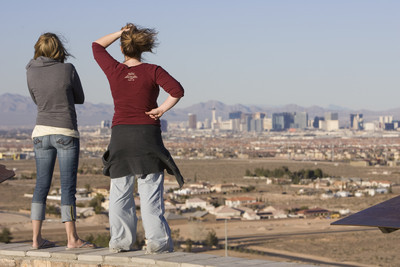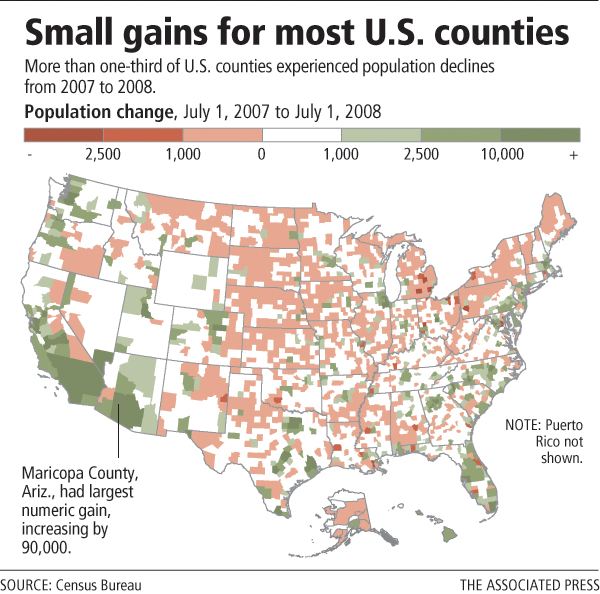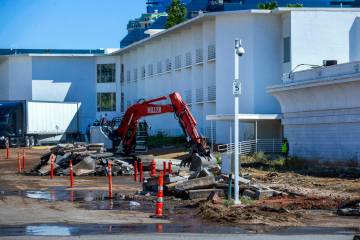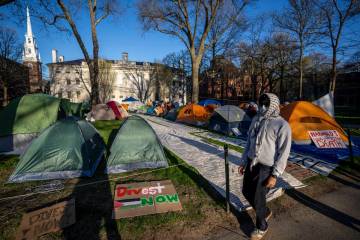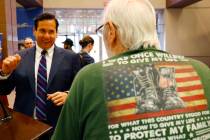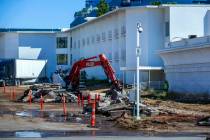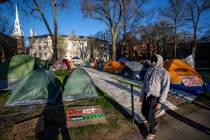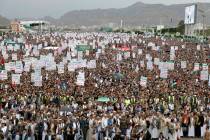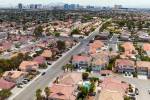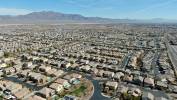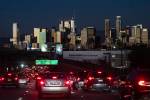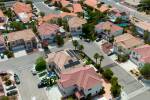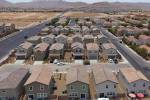LV population growth slows, analysts report
Las Vegas used to be among the fastest-growing metro areas in the nation. That is not true any more, according to the U.S. Census Bureau.
The latest census numbers, to be released today, say the Las Vegas metropolitan area grew by 38,091 people from July 1, 2007, to July 1, 2008 -- about 2 percent -- putting the total population here at 1,865,746. Those numbers differ slightly from local demographers, who say we actually shrank by about 10,000 people to just shy of 2 million.
State Demographer Jeff Hardcastle said the county, state and federal governments all have slightly different ways of estimating populations. But no matter the minor differences, the numbers all say the same thing: The days of unbridled growth are over. At least for now.
The country's economic collapse put an end to the rapid growth. And not just here. The census numbers show it's going on all over in places that used to see large annual growth rates. Florida, Arizona, Atlanta -- they've all seen massive slowdowns in growth.
The census numbers highlight a U.S. population somewhat locked in place by the severe housing downturn and economic recession, even before the impact of rippling job layoffs after last September's financial meltdown.
Experts say the slowdown is largely due to a rapid clip of mortgage foreclosures as well as frozen lines of credit that made it harder for out-of-staters to move in.
Keith Schwer, director of the UNLV Center for Business and Economic Research, said this means there are somewhere near 30,000 vacant housing units in the Las Vegas area right now with no one to move into them.
As a result of all this, rust-belt metro areas such as Buffalo, N.Y., Pittsburgh and Cleveland stanched some population losses, and Boston, Los Angeles and New York saw gains. Well-to-do exurbs around Washington, D.C., saw growth declines as people weary of costly commutes moved closer to federal jobs in the nation's capital.
"It's the bursting of a 'migration bubble,' " said William H. Frey, a demographer at the Brookings Institution think tank who analyzed the numbers. "Places that popped up in migration growth in the superheated housing markets earlier in the decade are now just as quickly losing their steam."
"It's the constraint of not being able to buy or sell a home that is keeping people from moving long distances," he said.
The latest population trends come as state and local governments are deciding where to pour billions of dollars in federal stimulus money to develop schools, roads, bridges and other infrastructure. The nation's decennial head count, used to apportion House seats and redraw congressional districts, also is fast approaching.
Despite its pricier housing market, San Francisco was back to its heyday growth of the 1990s, having formerly shriveled when the tech boom went bust in 2000.
Economists explain that because housing in San Francisco was so expensive for so many years, only the wealthy were able to buy. As a result, the area was less affected by mortgage foreclosures than other cities. San Francisco's tech industry also has been slower to lose jobs so far in the current recession, but officials aren't sure how long that will hold up given California's double-digit unemployment.
California had the biggest net loss from people moving to other states. The declines in its interior regions put it at risk of losing a House seat. Los Angeles had major gains, but partly at the expense of Riverside, a sprawling exurb nearby.
In the months ahead, jobs are expected to be a growing factor in U.S. migration.
The population in the nation's distressed counties, or areas with unemployment rates of 6 percent or higher in 2007, grew by 0.3 percent, compared to a 1.2 percent growth rate in areas with relatively low unemployment.
The overall nationwide growth rate was 0.9 percent, according to the Population Reference Bureau.
Both Schwer and Hardcastle said Las Vegas' recovery is dependent on the national economy.
"I wouldn't say we're stuck," Schwer said. "But very clearly, the climb is going to be flat.
"Growing," he said, "is the best way out."
Hardcastle said that despite the virtual stop in growth for one year, Clark County still ranks second only to Riverside County in California for adding the largest number of people between 2000 and 2008.
So he sees potential for recovery.
"Las Vegas has reinvented itself a number of times," he said. "I think we can continue to do it. I just don't know when."
The Associated Press contributed to this story. Contact reporter Richard Lake at rlake@reviewjournal.com or 702-383-0307.



